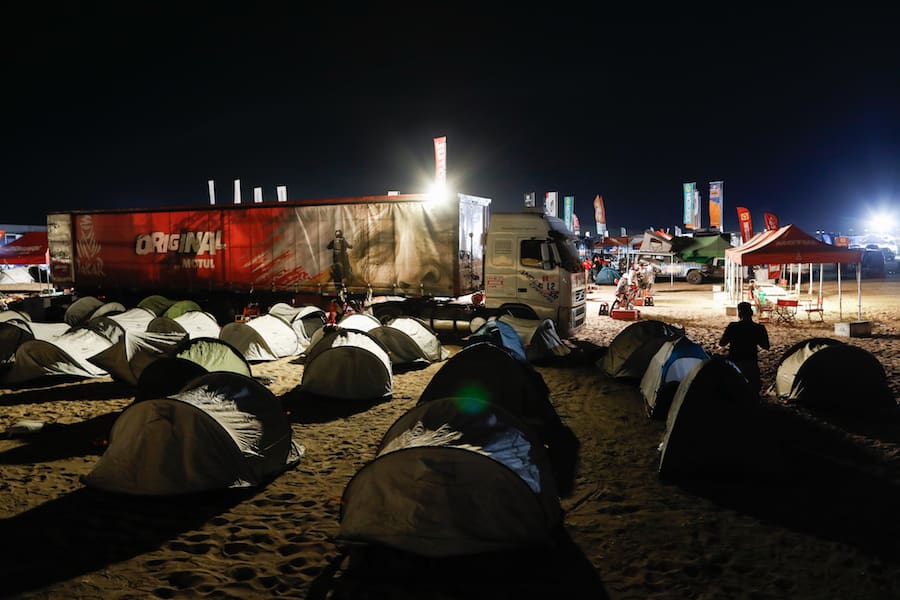January can easily become summer’s dead zone of boredom. When it’s too hot to ride what’s to do? Even television is a dead zone, largely inhabited by series repeats and cricket defeats, unless you like spending hours watching millionaires fire tiny balls at each other across a waist-high net.
But salvation is at hand. For a precious 30 minutes the Dakar rally gets a gig on SBS, bringing the ultimate off-road adventure into your living room. Described as the enduro rider’s version of the Isle of Man TT or a scene from the movie <i>Mad Max<i>, Dakar is one of the last great adventures in this largely risk-free world.
While it has become a million-dollar team sport, the spirit of its early years lives on in the Original by Motul subclass, a real Old School experience. Here riders race unsupported, relying on their own mechanical abilities coupled with their riding skills to survive to the end. Of course, along the way they help each other out.
This attitude harks back to the first Paris-Dakar race of 1978 when a motley collection of 200 modified motorcycles, cars and trucks left from under the Eiffel Tower in the general direction of Senegal, some 10,000km south. These were not big-budget teams, just enthusiastic privateers with a sense of adventure tempered with the ability to fix breakdowns and keep on keeping on.
Within a few years the factory-supported teams arrived and the entry list had doubled.
But it was still a seat-of-the-pants experience. With limited asphalt link roads, the entire rally organisation was moved from stage to stage by massive Antonov transport planes.
Riders were allowed minimal personal equipment and slept rough. The African Dakar was so basic that GPS technology was only used for the first time in 1992.
The move to South America in 2009 changed everything. A continent with a long-established network of sealed highways meant teams could upgrade to motor homes and mechanics could drive mobile workshops from stage start to stage finish.
But not for the Original by Motul class. This year around 30 riders, including Aussie James Ferguson, turned the clock back a couple of decades. Sourcing a KTM 450 factory race replica from Europe, Ferguson packed tools, vitals spares and clothing into a coffin-sized trunk and sent both off to South America.
Race organisers transported each rider’s storage trunk, travel bag, tent and one set of wheels and tyres between the stages. Other than that they were on their own.
The camaraderie of the original Dakar was on show every night as Original by Motul riders gathered around to help each other diagnose and repair problems that had developed during the day.
It was a dream come true for Ferguson, who ended 11th of the 15 finishers in his class and 67th overall. What was the motivation?
“I watched the Dakar on TV when I was a kid and always had it in the back of my mind,” said the 33-year-old from Newcastle. “My dad was a biker and I’ve ridden bikes all my life. I was looking for an adventure and the Original by Motul class was the obvious choice. I like to do everything myself.”
As I thought about his heroic efforts I relived a small-scale adventure of my own some 15 years ago. Way out of my comfort zone on a BMW Safari in western NSW, I found myself smashing down scrub as the F 650 GS kept spearing demonically out of the deep sand ruts.
Exhausted I pulled over when I saw another rider parked up. It was BMW’s PR guru, calmly taking a mobile phone call from Charley Boorman, who was in Melbourne trying to blag a BMW. We were obviously back on the edge of civilisation, and my thoughts turned to the motel swimming pool that lay 50km ahead.
Adventure has its limits for people like me, but not for those who tackle the Dakar every January.
By Hamish Cooper












